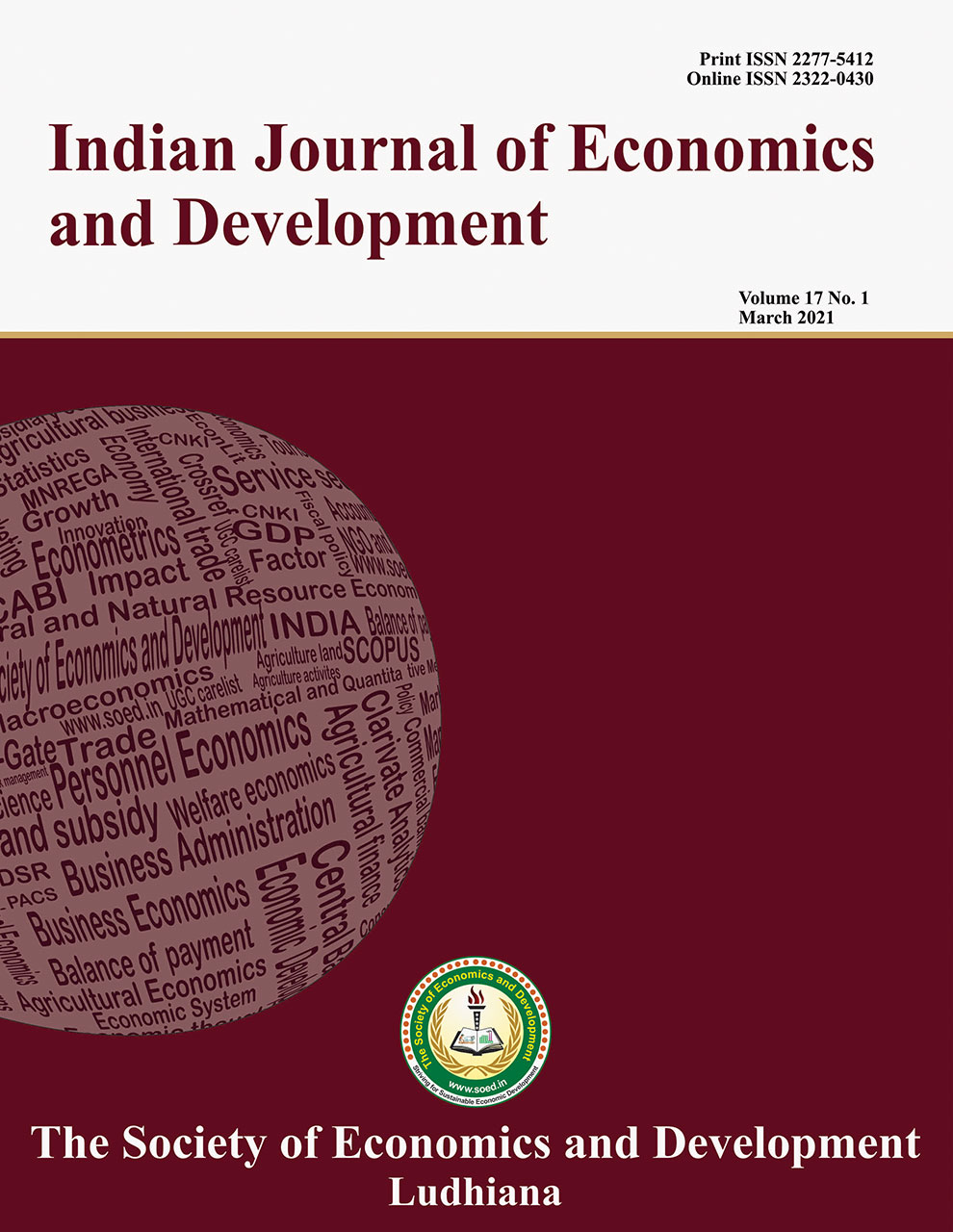Estimation of Volatility in BSE-SENSEX by Fitting GARCH (1,1) Model

Price: ₹ 500.00
Author: B. Krishnakumare , S. Niranjan and D. Murugananthi
Author Address: 1Senior Research Fellow, Directorate of Agribusiness Development, Tamil Nadu Agricultural University, Coimbatore- 641003 (Tamil Nadu), Ph.D. Scholar, Division of Agricultural Economics, Indian Agricultural Research Institute, 2 New Delhi, 110012 and Assis
Keywords: Conditional variance, GARCH, heteroskedasticity, volatility
JEL Codes: G11, G17, G41
Abstract
This paper aimed to investigate the volatility of the Bombay Stock Exchange of India aka BSE Sensex based on the Generalized Autoregressive Conditional Heteroskedasticity (GARCH) model. The study empirically tested the volatility of SENSEX using daily data for 10 years, between 2009 and 2019. The empirical analysis is based on closing prices of index-daily observations (4833) and provided additional insight regarding volatility patterns. Augmented Dickey-Fuller (ADF) test was used to test for stationarity and GARCH (1, 1) model was employed to estimate volatility. The results of the ADF test revealed that financial data was stationary. Results of the GARCH (1, 1) model stated that there existed persistent and robust volatility. This implied that the index experienced frequent small gains and few significant losses which would lead to high risk and in turn the chance of higher return. To investigate volatility shocks, GARCH methodology, which is an advanced econometric method preferred to depict actual effects was employed.
Description
Indian Journal of Economics and Development
Volume 16 No. 3, 2020, 469-472
DOI: https://doi.org/10.35716/IJED/19144
Indexed in Clarivate Analytics (ESCI) of WoS
Scopus: Title Accepted
NAAS Score: 4.82



